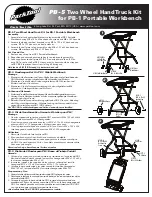
13
After Sales Support
EMAIL: service.australia@einhell.com
TEL: 1300 922 271
Screwing without hammer action
Vibration emission value a
h
≤ 2.5 m/s
2
K uncertainty = 1.5 m/s
2
Additional information for electric power tools
Warning!
The specified vibration value was established in accordance
with a standardized testing method. It may change according
to how the electric equipment is used and may exceed the
specified value in exceptional circumstances.
The specified vibration value can be used to compare the
equipment with other electric power tools.
The specified vibration value can be used for initial
assessment of a harmful effect.
Keep the noise emissions and vibrations to a minimum.
•
Only use appliances which are in perfect working order.
•
Service and clean the appliance regularly.
•
Adapt your working style to suit the appliance.
•
Do not overload the appliance.
•
Have the appliance serviced whenever necessary.
•
Switch the appliance off when it is not in use.
•
Wear protective gloves.
Residual risks
Even if you use this electric power tool in accordance with
instructions, certain residual risks cannot be rules out.
The following hazards may arise in connection with the
equipment’s construction and layout:
1. Lung damage if no suitable protective dust mask is used.
2. Damage to hearing if no suitable ear protection is used.
3. Health damage caused by hand-arm vibrations if the
equipment is used over a prolonged period or is not
properly guided and maintained.
4.5 BEFORE STARTING THE
EQUIPMENT
Charge the battery pack with the charger supplied. An empty
battery pack requires a charging period of approximately 1
hour.
For more details about charging the battery pack please read
the operating instructions of the 1-hour charger.
Always remove the battery pack before making adjustments
to the equipment.
Mounting and removing the battery pack
(Fig. 2/Item 4)
Mounting:
Push the battery pack (4) onto the equipment until it latches
in place.
Removing:
Press the pushlock button (5) and pull the battery pack (4) out
of the equipment.
4.6. OPERATION
4.6.1 Torque setting (Fig. 3 / Item 1)
The cordless drill is fitted with a mechanical torque selector.
The torque for a specific size of screw is selected with the
torque selector (1). The correct torque depends on several
factors:
•
on the type and hardness of material in question
•
on the type and length screws used
•
on the requirements needing to be met by the screwed
joint.
The clutch disengages with a grating sound to indicate when
the set torque is reached.
Important! The tool must be at a standstill when you set the
torque with the setting ring.
4.6.2 Drilling (Fig. 3 / Item 1)
For drilling purposes, move the torque selector (1) to the
last step “Drill“. In this setting the slip clutch is inactive. The
maximum torque is available in drilling mode.
4.6.3 Forward/Reverse switch (Fig. 4 / Item 2)
With the Forward/Reverse switch (2) above the On/Off
switch (3) you can select the direction of rotation of the
battery-powered drill and secure it against being switched
on accidentally. You can choose between clockwise and
anticlockwise rotation. To avoid causing damage to the
gearing it is advisable to change the direction of rotation
only when the tool is at a standstill. The On/Off switch (3) is
blocked when the Forward/Reverse switch (2) is in centre
position.
4.6.4 On/Off switch (Fig. 4 / Item 3)
Infinitely variable speed control is possible with the On/Off
switch (3). The further you press the On/Off switch (3), the
higher the speed of the battery powered drill.
4.6.5 Changing the accessory (Fig. 5)
Important
. Set the Forward/Reverse switch (2) to its centre
position whenever you carry out any work (for example
changing the accessory, maintenance work, etc.) on the
cordless drill.
•
The cordless drill is fitted with a quick change chuck (7)
with an automatic spindle stop.
•
Open the chuck (7). The chuck opening (a) must be large
enough to hold the accessory (drill bit or screwdriver bit).
•
Select the suitable accessory. Push the accessory as far as
possible into the chuck opening (a).
•
Tighten the chuck (7) and then check that the accessory
is secure.
4.6.6 Screwdriving
We recommend using self-centering screws (e.g. Torx screws,
recessed head screws) designed for reliable working. Be sure















































